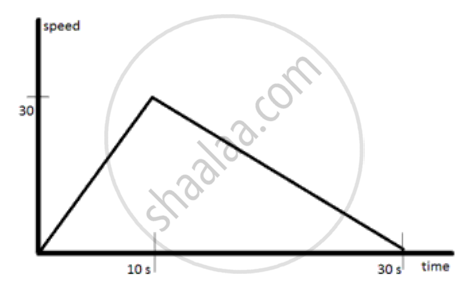Advertisements
Advertisements
प्रश्न
A car accelerates to a velocity of 30 m/s in 10 s and then decelerates for 20 s so that it stops. Draw a velocity-time graph to represent the motion and find:
The acceleration.
उत्तर

Acceleration a= (v - u)/t= (30 - 0)/ 10 = 3 ms-2
APPEARS IN
संबंधित प्रश्न
Give a scientific reason.
When an object falls freely to the ground, its acceleration is uniform.
Figure given below shows a velocity-time graph for a car starting from rest. The graph has three parts AB, BC and CD.

Which part of graph shows motion with uniform
(a) velocity (b) acceleration (c) retardation ?
A vehicle is accelerating on a straight road. Its velocity at any instant is 30 km/h. After 2 s, it is 33.6 km/h, and after further 2 s, it is 37.2 km/h. Find the acceleration of the vehicle in m s-2. Is the acceleration uniform?
Draw velocity – time graph for the following situation:
When a body is moving with variable velocity, but uniform retardation.
From the velocity – time graph given below, calculate deceleration in region BC.

Diagram is given below shows velocity – time graph of car P and Q, starting from the same place and in the same direction. Calculate the Acceleration of car Q between 2 s – 5 s.

What is the SI unit of acceleration?
Write the SI unit of acceleration and retardation.
Can you use the relation [B1]?
The rate of change of velocity is ______.
